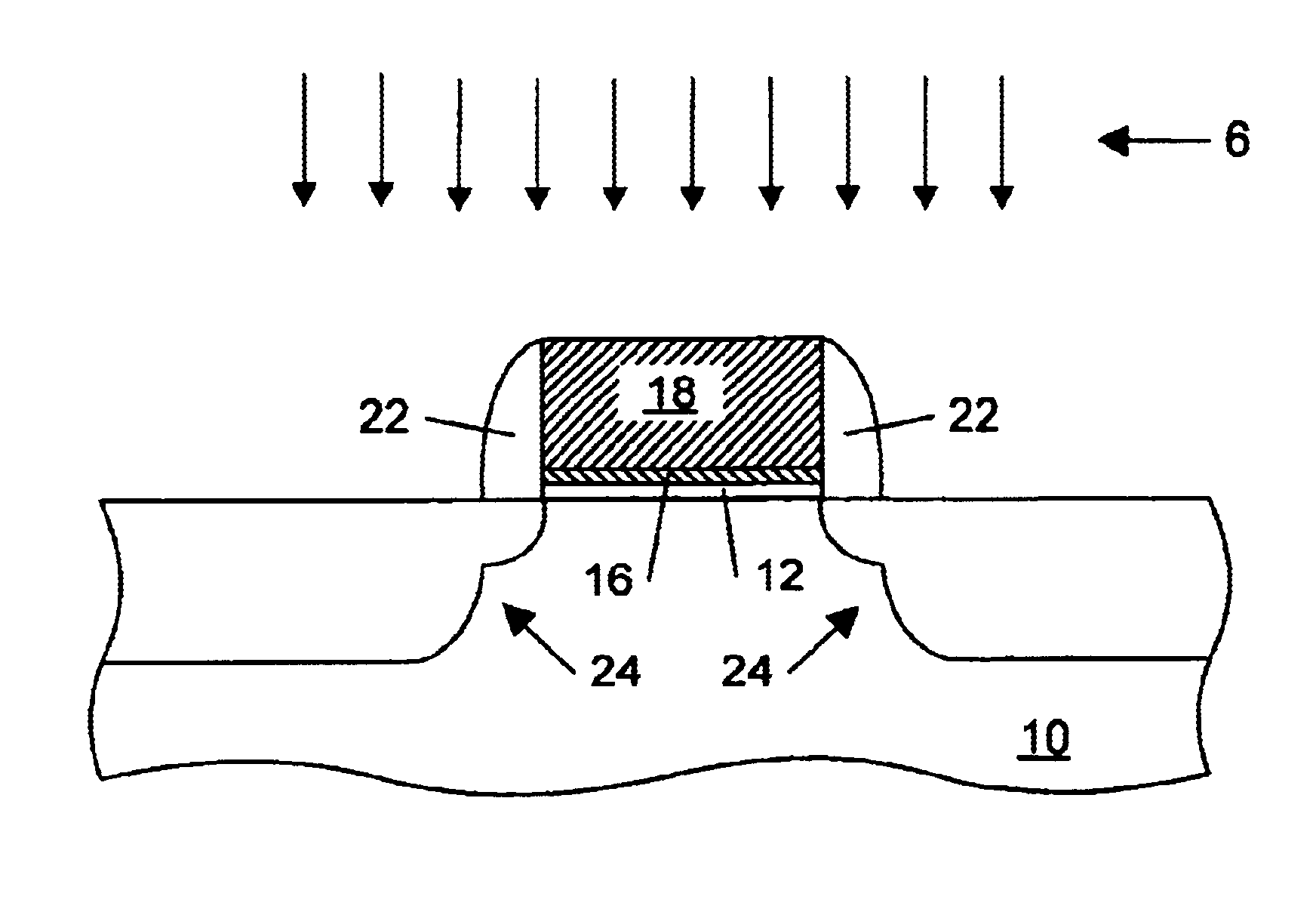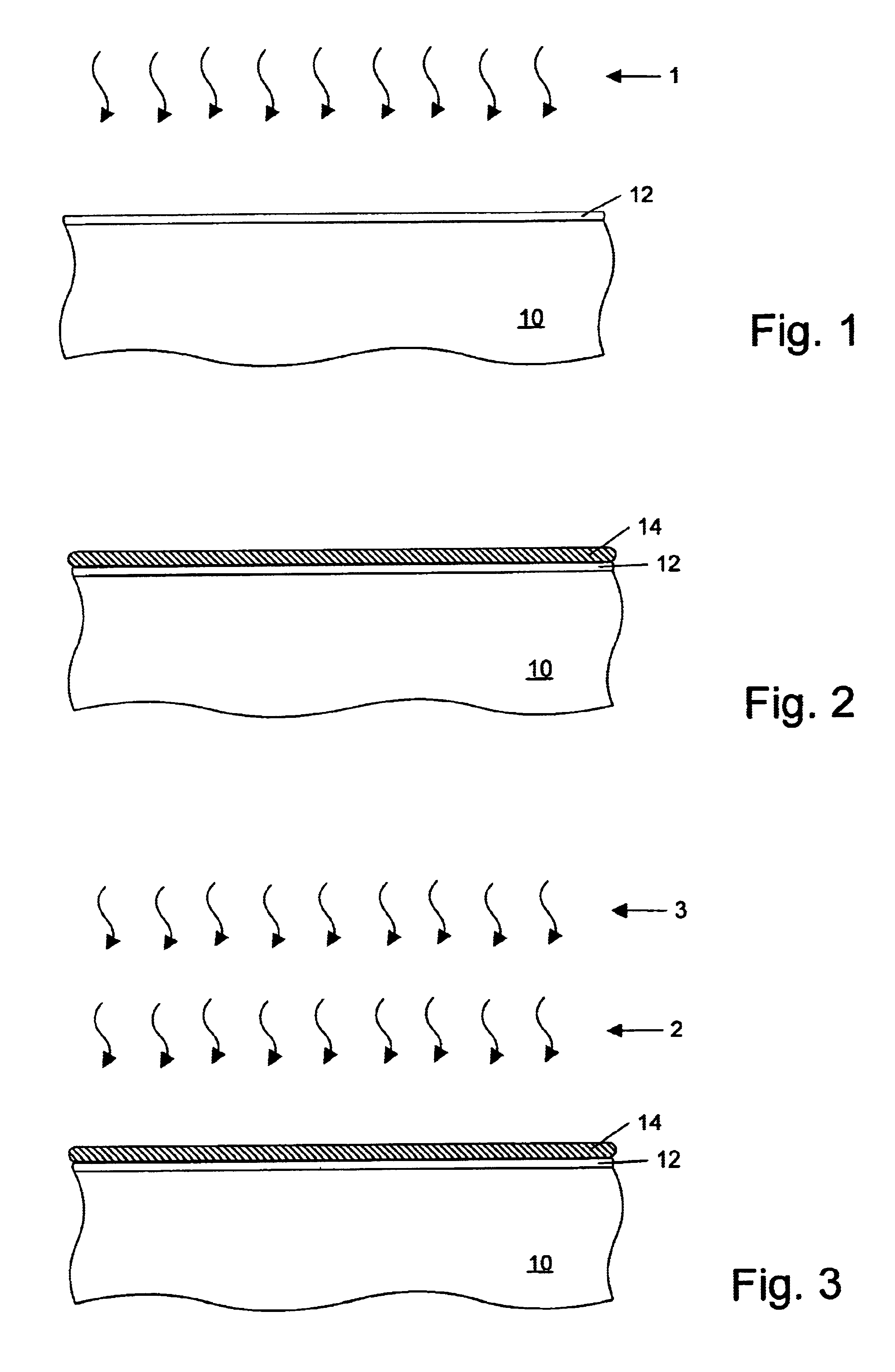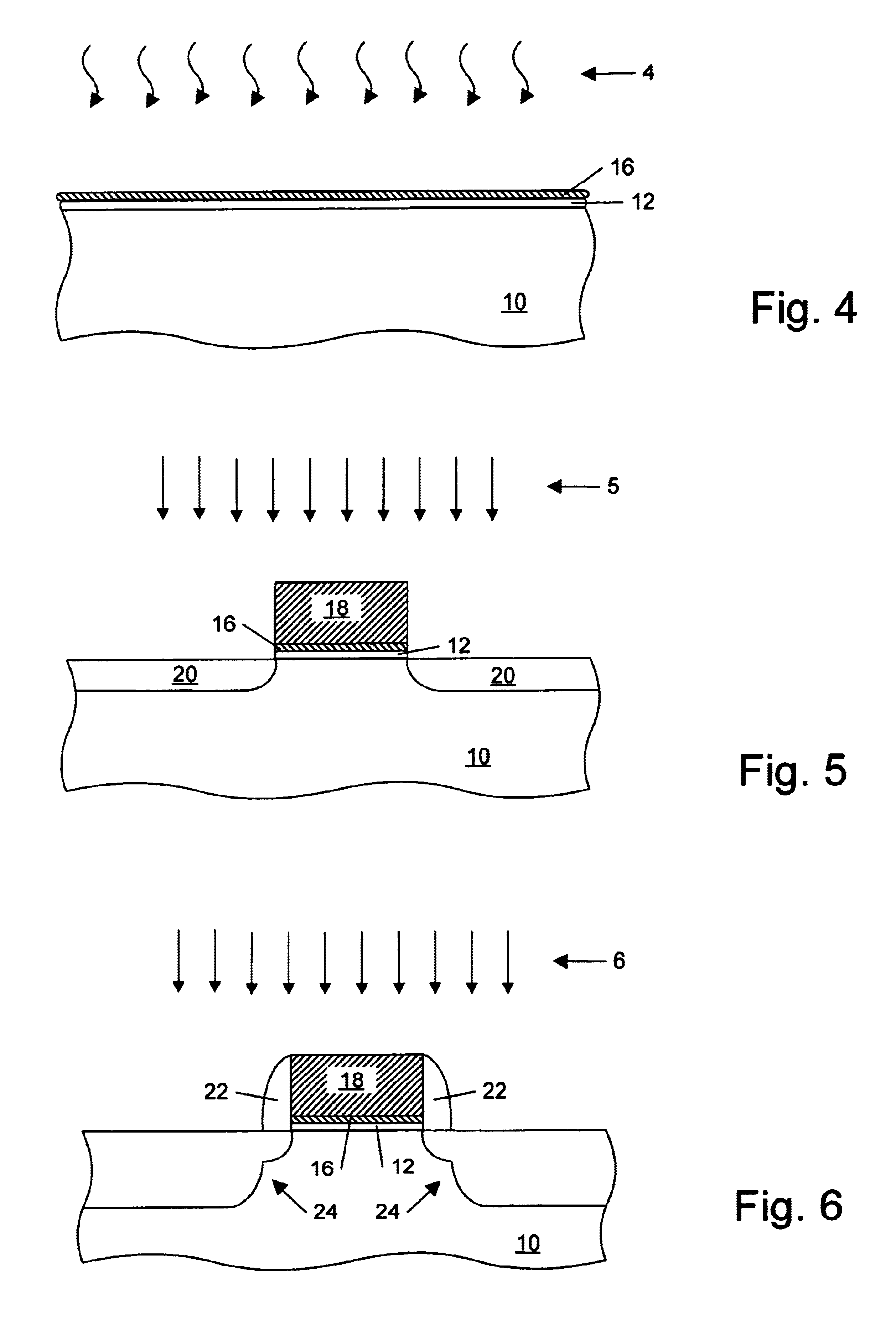Ultrathin high-K gate dielectric with favorable interface properties for improved semiconductor device performance
a dielectric and interface technology, applied in semiconductor devices, semiconductor/solid-state device details, electrical devices, etc., can solve the problems of gate oxide breakdown at even lower gate voltage values, adversely affecting the operability of the device, and thin oxide films may break down, so as to improve the resistance of the oxide to impurity diffusion, increase the dielectric constant, and improve the effect of the resistance of the oxide to chemical vapor deposition
- Summary
- Abstract
- Description
- Claims
- Application Information
AI Technical Summary
Benefits of technology
Problems solved by technology
Method used
Image
Examples
Embodiment Construction
[0031]Turning to the drawings, FIG. 1 illustrates a partial cross-section of a semiconductor topography including an ultrathin (from about 4 angstroms to about 8 angstroms thick) nitrogen-containing oxide 12 formed upon a semiconductor substrate 10. Semiconductor substrate 10 is preferably silicon, and is doped either n-type (for producing a p-channel transistor) or p-type (for an n-channel transistor). More specifically, substrate 10 may be an epitaxial silicon layer grown on a monocrystalline silicon substrate, or an n-type or p-type well region formed in a monocrystalline silicon substrate. The method recited herein may also be suitable for other semiconductors, such as, for example, gallium arsenide. Although not shown, there may be dielectric isolation regions formed within substrate 10 to prevent electrical interaction between subsequently-formed semiconductor devices. Methods of forming the isolation regions may include dielectric deposition to fill trenches etched into the s...
PUM
 Login to View More
Login to View More Abstract
Description
Claims
Application Information
 Login to View More
Login to View More - R&D
- Intellectual Property
- Life Sciences
- Materials
- Tech Scout
- Unparalleled Data Quality
- Higher Quality Content
- 60% Fewer Hallucinations
Browse by: Latest US Patents, China's latest patents, Technical Efficacy Thesaurus, Application Domain, Technology Topic, Popular Technical Reports.
© 2025 PatSnap. All rights reserved.Legal|Privacy policy|Modern Slavery Act Transparency Statement|Sitemap|About US| Contact US: help@patsnap.com



